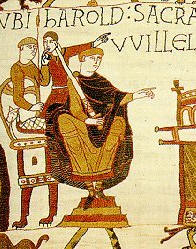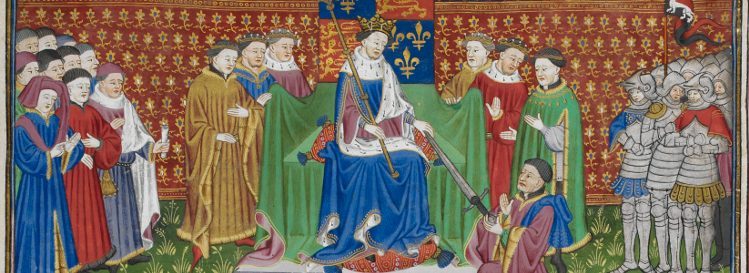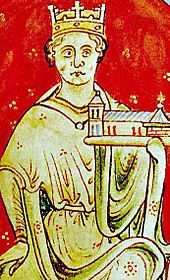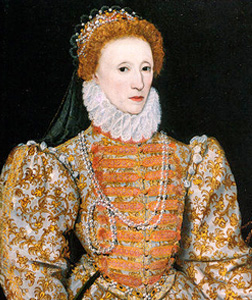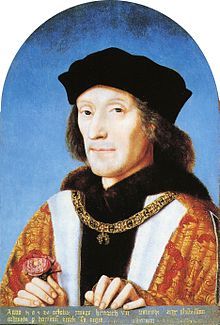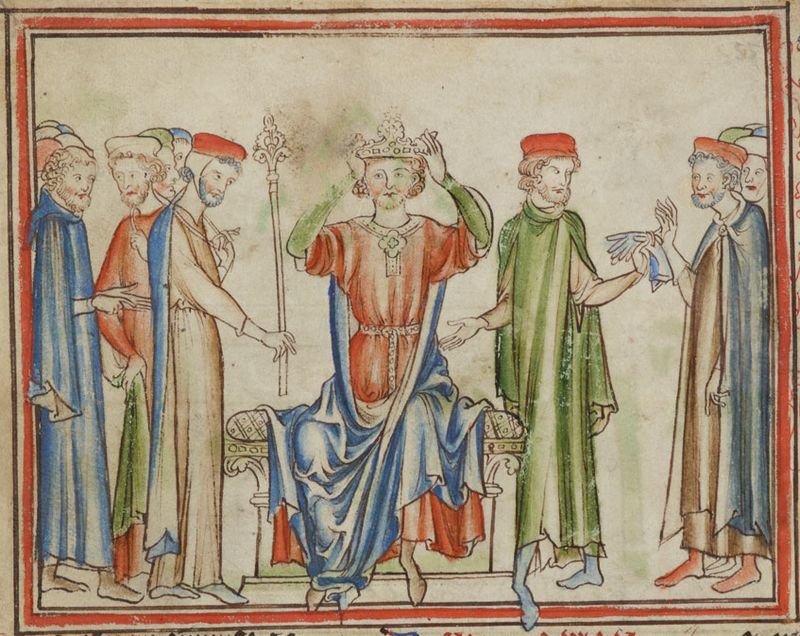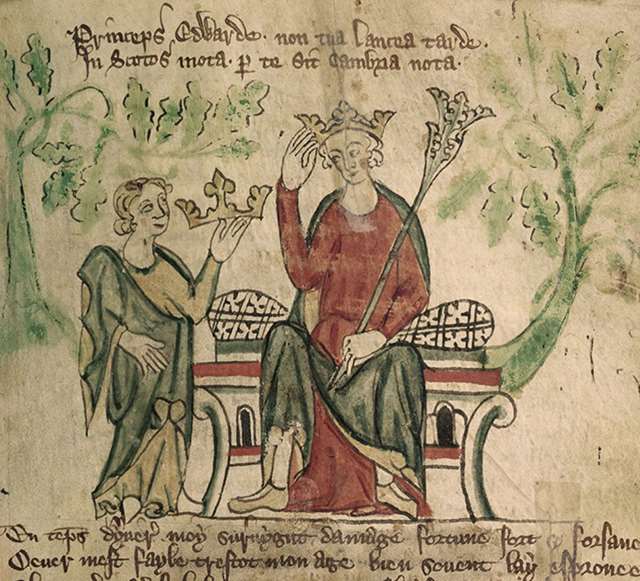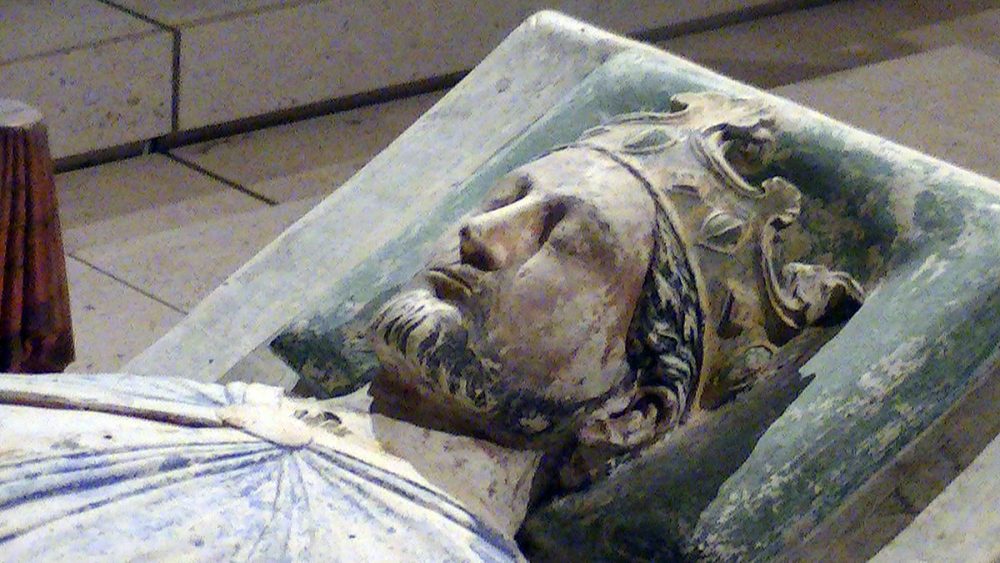Kings and Queens of England have played a large part in the shaping of the country. For much of England’s past, the monarch ruled supreme. The relationship of these Kings and Queens with the nobility, the people and other countries led to the wars, alliances and political changes that led to the foundation of a United Kingdom. Our content on English monarchs draws from existing units. It will be expanded to include pre-Norman monarchs and into more recent dynasties.
Norman Kings and Queens
William the Conqueror. 1066-1087.
William II (Known as Rufus) 1087-1100
Henry I 1100-1135
Stephen 1135-1154
Kingship in the Norman era was much disputed. William the Conqueror’s eldest son, Robert, did not inherit the crown of England. Instead, it was given to William Rufus. This led to conflict between the brothers over the English crown and control of the Duchy of Normandy. When Rufus was killed whilst hunting, Henry, another of the Conqueror’s sons, took the crown quickly. Again, Robert contested this. Henry attempted to create a clear line of succession. He nominated his son as heir. However his son predeceased him. Henry then nominated his daughter, Matilda, as his heir. Upon Henry’s death, the crown was taken by Stephen, a grandson of the Conqueror. This also resulted in war, in a period known as the Anarchy. This ultimately led to the recognition of Henry Plantagenet, Matilda’s son, as the heir. From this point onwards inheritance of the crown through primogeniture became more common, though not always adhered to.

Plantagenet Kings and Queens
Henry II 1154-1189
Richard I 1189-1199
John 1199-1216
Henry III 1216-1272
Edward I 1272-1307
Edward II 1307-1327
Edward III 1327-1377
Richard II 1377-1399
Henry IV 1399-1413
Henry V 1413-1422
Henry VI 1422-1461
Edward IV 1461-1470
Henry VI 1470-1471
Edward IV 1471-1483
Edward V 1483
Richard III 1483-1485
The Plantagenet Dynasty in various guises ruled England for longer than any other to date. Succession was largely through the line of male primogeniture in the earlier years of the line. This changed with the usurping of Richard II and Henry IV acceding to the throne. In later years this would have consequences as legitimacy to be King became an issue in the War of the Roses. The War of the Roses broke out during the reign of Henry VI. His rule was one in which factions dominated court and their fortunes changed quite often. It led to the outbreak of conflict between the two main lines of the Plantagenet family: the Houses of Lancaster and York. The conflict saw the ‘Princes in the Tower’ vanish without trace. Richard III was killed in battle at Bosworth Field. He was succeeded by the victor on that day, Henry Tudor, who claimed legitimacy through his mothers line.
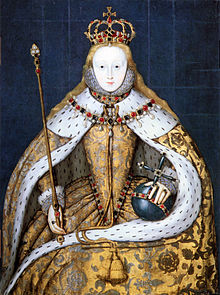
Tudor Kings and Queens
Henry VII 1485-1509
Henry VIII 1509-1547
Edward VI 1547-1553
Mary 1553-1558
Elizabeth 1558-1603.
The Tudor era was a tumultuous period in English history. It was the time of the Reformation and Renaissance. England also saw upheaval as a result of Henry VIII’s break with the church in Rome, remarriages and struggles to produce an heir. This famously saw Henry have 6 wives and contributed to the Dissolution of the Monasteries. His heir, Edward VI, was young. His reign was short but saw the beginnings of a Protestant state emerge. The subsequent accession of his sister, Mary, an ardent Catholic, saw a period of counter reformation. Throughout the reigns of both, and into that of Elizabeth, religious issues dominated domestic policies. Elizabeth’s reign attempted to deal with this through a Religious Settlement. The Elizabethan era saw these issues manifest themselves through plots relating to Mary, Queen of Scots. There followed the Spanish Armada. Succession remained an issue throughout the Tudor period. Elizabeth died childless. Her next of kin was James Stuart, son of Mary, Queen of Scots.
The Stuarts as Kings and Queens of England
James I 1603-1625
Charles I 1625-1649
Interrengum
Charles II 1660-1685
James II 1685-1689
William III and Mary 1689-1694
William III 1694-1702 (Sole rule after Mary’s death)
Anne 1702-1714
The House of Stuart’s rule lay either side of England’s only period of history when the government was a Republic. The Rights of Kings and Parliament was a politically charged issue for the early Stuart monarchs. It led to the outbreak of war. Charles I was defeated. Parliament put him on trial, found him guilty of crimes against his own country and executed him. A period known as Interregnum followed. A Republic, headed by Oliver Cromwell. The house of Stuart was restored 1660. Charles II is remembered as being the Merry Monarch, despite his reign including the Great Plague of 1665 and the Great Fire of London. He was followed by James II. James was overthrown in 1688 in the Glorious Revolution.
The House of Hanover
George I 1714-1727
George II 1727-1760
George III 1760-1820
George IV 1820-1830
William IV 1830-1837
Victoria 1837-1901
The early period of the House of Hanover’s rule saw a Jacobin rebellion. George I had become king as he was the closest living male protestant relation of Queen Anne. Had there not been a bar on Catholics being able to take the crown, he would have been 50th in line. The Jacobins supported the claim of those descending from James II. The last battles fought on English and British soil took part during these conflicts. The Georgian era, as it is also known, saw the rise of Parliament as we know it today. Politicians grew in prominence. England prospered. Acts of Union created Great Britain. The colonies became an empire. Trade prospered due to the Industrial Revolution.
House of Saxe-Coburg
Edward VII 1901-1910
House of Windsor
Note: The house of Windsor derives from the House of Saxe-Coburg. The family name was changed by Royal Proclamation on 17th July 1917.
George V 1910-1936
Edward VIII 1936
George VI 1936-1952
Elizabeth II 1952-
The House of Saxe-Coburg replaced the House of Hanover due simply to Queen Victoria’s husband, Prince Albert, being from the Saxe-Coburg family. Their son, Edward, inherited his fathers family titles as well as the crown. The family name was changed by Royal Proclamation to Windsor in 1917. This was a response to the war with Germany and the German origins of the Saxe-Coburg name, lands and titles. In 1936 the family experienced a crisis when Edward chose to marry Wallis Simpson. Simpson was in her second marriage, already divorced once, when she met Edward. The prospect of Edward marrying someone who was twice divorced and whom had both ex-husbands alive and well was too much for many of the establishment to take. Edward abdicated to marry her. George VI, his brother, acceded. The Royal Family remained in Royal palaces for most of the Second World War. This endeared them to the people, particularly those in London. George passed away in 1952. His daughter became Elizabeth II. Her reign is the longest of any English monarch.



